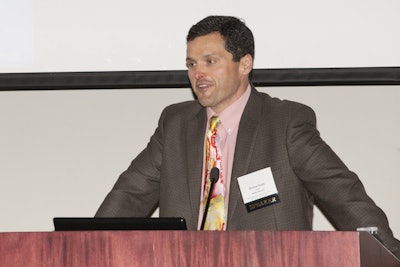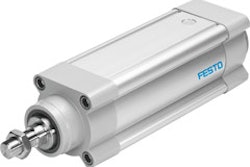
Do too many disincentives exist for companies to develop truly novel and disruptive therapies? Why does the medical community assume every patient will respond similarly to a pill or device? Why do we merely repair damage when we can virtually eliminate it? Are we close to developing platform technologies to support future growth in pharmaceuticals, biologics, and medical devices?
My recurring column is called “The future of Medicine.” As my readers know, I don’t like to do things the way others do them—unless it makes sense. So instead of making a top 10 list of technologies poised to impact medicine in the years to come, here is my list of the top 10 questions to ask to take us to 2024 and beyond. Keep in mind: answers are only as good as the questions we ask!
1. What constitutes a trend?
Anyone can see a trend after 20 or more data points. But can you see a trend with only one or two data points? Indeed, can you see a trend before there are any data points at all? Most would say no. I would say absolutely, if you use a little thinking and a little imagination. It’s like predicting the stock market. Could you be wrong? Of course! But how would you know if you never try? Albert Szent-Gyorgi, who was awarded the Nobel Prize in Physiology and Medicine in 1937, said, “Discovery is seeing what everyone else has seen and thinking what no one else has thought.”
2. Have we created incentives or disincentives?
It has been suggested that we’ve created incentives for companies to bring to market products that we essentially already have (i.e., me-too’s) while at the same time we’ve created disincentives for companies to develop anything truly new or novel. There are regrettably many examples--I will share just two: one involving regulation and the second reimbursement.
In the medical device world, if a company has a choice between developing a device under the 510k or the PMA (premarket approval), they are much more likely to pursue the 510k for all the obvious reasons, but it’s an incentive for mediocrity.
Now on to reimbursement: given a choice between developing a product that can be fit within an existing reimbursement category versus a truly new and novel product that would require establishment of a new reimbursement category, the manufacturer will likely choose the existing reimbursement category once again for all the obvious reasons. But it’s also an incentive for mediocrity.
Most product development in medicine is evolutionary, i.e., come out with one product, tweak it a bit to make a new product, etc. I understand the advantages of evolutionary product development from a technology perspective, from a business perspective, and even from a psychology perspective. But here’s the problem: the light bulb did not evolve from the candle. The car did not evolve from the horse. You can tweak a horse as many times as you want but you will never end up with a car! This is what Harvard Business School professor Clayton Christensen calls a disruptive technology—a new technology that “unexpectedly” displaces an established technology. Although I have been very successful in helping companies bring revolutionary products to market, there are not many of them. I spend much of my time helping companies on me-too products.
3. Why wait to swallow a pill or have device implanted to see if it works?
We have been practicing medicine like this for centuries but does it make sense? Not to me! I want to know to a very high degree of certainty whether that pill is going to work for them before they swallow it because if it’s not going to work, I’m not going to give it to them. This is just the beginning of personalized medicine, a.k.a. pharmacogenomics. And this is what companion diagnostics (a subset of in vitro diagnostics) is all about. It’s another example of a combination product, what’s called a cross-labeled combination product, at least in some parts of the world.
In fact, drug companies are coming to realize it is not enough to simply get a new drug thru the FDA. More and more, FDA and Centers for Medicare & Medicaid Services are “encouraging” manufacturers to develop companion diagnostics to be developed at the same time! As a result, drug companies are partnering with device companies to do just that. It’s another of many examples of the convergence of the pharmaceutical industry with the medical device industry.
4. Why should personalized medicine be limited to drugs and biologics?
Many assume pharmacogenomics or personalized medicine is limited to drugs and biologics, but some of my favorite examples of personalized medicine come from the medical device world. In my previous columns, I have described being able to “manufacture” surgical instruments on-demand using 3D printing. But why stop there? Can we print devices that are permanently implanted into patients? We are already doing it. Can we print new drugs? We’re working on that. Can we print living tissue? We’re starting to do that well. My uncle Adison Groak, a mechanical engineer used to say, “Nothing is impossible—the impossible just takes a little longer!”
5. What are the implications for manufacturing and packaging professionals?
Consider this: as we are able produce more devices and even drugs and living tissues as needed, i.e., on-demand, in hospitals or in some cases in patients’ homes, what will that mean in terms of sterility, stability, shelf life, and packaging? As we enter what Aldous Huxley might call the brave new world of medical technology, manufacturers will need to realize that the way we have done things in the past may not make sense in the future. Although change is difficult, it is also inevitable. We must be open to new ideas and new ways of thinking—something that unfortunately the medical technology industry does not have a good track record of doing.
6. Why take a one-size-fits-all approach to drugs and devices? Why assume everyone will respond the same way to a drug or device?
Why should a company decide how much drug to put into a pill? We have been doing this for a long time but does it make sense? Not to me. In a previous column, I described what I call “high-tech compounding”—in essence, a “vending-like machine” in a pharmacy or doctor’s office that will “manufacture” pills on-demand for a given patient. If you have used the Coca-Cola freestyle® soda machine, imagine doing the same thing for drugs. Out of the machine comes the right number of pills, containing the right combination of drugs, using the right dosage and the right release rates (i.e., kinetics), all determined by the patients genome and other phenotypical characteristics—something that we simply cannot accomplish using the conventional pharmaceutical manufacturing, i.e., blockbuster model. So what’s holding us back? Clearly there are technological challenges, but those are solvable problems. What’s really holding us back? Two things: the momentum of the blockbuster model and the fallout of the New England Compounding Center case.
Some compare this industry to a heavily loaded freight train barrelling down the tracks at 60 mph—very difficult to change direction without causing a derailment. On the other hand, others argue perhaps a derailment is exactly what we need to get us to wake up and pay attention. To prevent a disaster, perhaps there is a middle ground. Maybe if the train gets up on two wheels, that’s enough to get us to pay attention before a derailment occurs.
7. Why simply slow/stop progression of disease or injury? Why not erase it?
Nearly one third of all medical products under development today are combination products. Why? There are many reasons but the biggest is that when drugs, biologics, or medical devices are used alone (i.e., monotherapies), at best they slow or stop the progression of a disease, but they cannot erase it.
Consider this example: if a patient has a heart attack and a portion of their heart becomes necrotic or dead, we can do an angioplasty, we can put in a stent, we can put in a drug-eluting stent, and we can put in 100 drug-eluting stents if we want to, but from the perspective of the cells in the heart that have died, have you accomplished anything? Absolutely not!
The best outcome that you can hope for with current technologies is preventing the problem from getting worse—what we call palliative relief. In the absence of something better, palliative treatment is OK, but we’ve faced that limitation in medicine for decades, and it’s about time that we get past it. I don’t want to simply prevent a medical problem from getting worse; I want to erase the damage in the heart caused by the heart attack as if the patient never knew that he or she had a heart attack to begin with. I want to be able to erase the damage in the brain caused by ischemic stroke, Parkinson’s, Alzheimer’s, or multiple sclerosis, as if the patient never knew that he or she had those diseases or injuries to begin with. I want to erase the damage in the pancreas caused by insulin-dependent diabetes mellitus, or so-called type 1 diabetes. This is not the next evolutionary advance in medicine; this is a revolutionary advance, a change in the whole ethos of how we approach medical problems.
The regulatory and manufacturing challenges that these technologies pose are great but they are not insurmountable. We must be willing to try. We must be willing to take risks. And we must be willing to be wrong. Aristotle said, “Criticism is something you can avoid easily… by saying nothing, doing nothing, and being nothing.” So in other words, if you are not being criticized at least by some, at least occasionally, are you really doing anything worthwhile?
8. Why not think smaller?
Biomedical nanotechnology is another emerging area that I have discussed in previous columns. And while smaller often has it’s advantages, it comes with challenges as well. One of the advantages of nanotech products is they can get everywhere in the body. One of the disadvantages of nanotech products is that they can get everywhere in the body. So control is an issue —but we are working on ways to solve that problem. What does that mean for packaging professionals? Consider this: how do you plan to keep nanotech products in a package?
9. Why wait for FDA or anyone else to tell you what to do?
Many think that regulation and innovation are diametrically opposed, i.e., the more regulation we have, the less innovation. I understand why many think this way but I don’t think it must be so. It is possible to have great innovation and decent regulation but the solution is not to have more regulation, we already have lots of that. The solution is to get people to think.
But not only can too much regulation inhibit innovation, too little regulation, or vague regulation, or indeed no regulation at all can also inhibit innovation. How? Consider this: After one of my recent keynote presentations of the future of biomaterials, one attendee shared his company has a “wicked-cool” idea for a new nanotech product. But in the absence of a defined regulatory pathway, they are hesitant to pursue it.
Most companies don’t like to be the first through the doors at FDA with a new technology. One of the many reasons why is the unknown regulatory pathway. But this is where I take a different approach. I love to be the first through the door because it gives me the opportunity to get the reviewers to think the way I want them to think. In other words, if I’m the second or third through the door and I want to do something different than what the people before me did, now I have to make the case that what those people did was not appropriate or perhaps even wrong and what I want to do is better. I have been successful both ways but given a choice I would prefer to be first and not have the “baggage” of what those others did before me.
This brings us to what I call competitive regulatory strategy. To those who have heard the phrase, competitive regulatory strategy usually means, “how did my competitor get their product to market before me.” But that’s not competitive regulatory strategy… that’s simply playing follow the leader!
Anyone can design a regulatory strategy to get a product to the market through the FDA. The real challenge is how can we design a regulatory strategy that will not simply get a product on to the market but act as a barrier to entry to your competition at the same time. In other words, make it more difficult for your competitor to follow in your footsteps. There are many subtle and not so subtle ways that this can be done, but unfortunately many don’t even think in these terms.
10. Why be content with the status quo?
Imagine where we could be if discontent for the status quo was the norm rather than the exception. How do we do all this? The first step is to set the bar higher—the next step is to figure out how to get over it —the final step is to go back and repeat step one.
I spend some of my time working on ‘platform technologies,” a new technology (or a new way to look at the world) that can potentially be used for many applications and could can change the world in HUGE ways… both in ways that exist today as well as in ways that haven’t even been dreamed of yet! In other words, a game changer in that it forces people to think differently—what Steven Covey would call a paradigm shift. Examples include sanitation, electricity, automobiles, computers, the Internet, etc.
Once upon a time, most people thought it was impossible for humans to fly. Fortunately, Orville and Wilbur Wright did not believe this. How long did it take for human flight to impact the world? Years? Decades? Centuries? If Orville and Wilbur Wright were content with the status quo in 1903, what would we not have today more than a century later? As we move through 2014 with an eye to 2024 and beyond, these questions and the discussions they generate should resonate with medical technology manufacturers/packagers, their suppliers, and the regulatory community.
Definitions:
Cross-labeled combination product: When two different products among medical devices, biologics, or drugs are labeled to be used with one another
Convergence: The merging of drug, biologic, and medical device into a medical technology that combines all three
Phenotype/genotype: Genotype refers to the internally coded/inheritable information, or DNA of a living organism/human; phenotype refers to an observable our outward physical characteristic of a living organism/human
Platform technology: Enables the creation of products or processes that support present, future, or past development; may or may not also be a disruptive technology
Dr. Michael Drues is President of Grafton, MA-based Vascular Sciences, an education, training, and consulting company. He can be reached on Linkedin® at www.linkedin.com/in/michaeldrues, by phone at 508.887.9486, and by e-mail at [email protected]


























